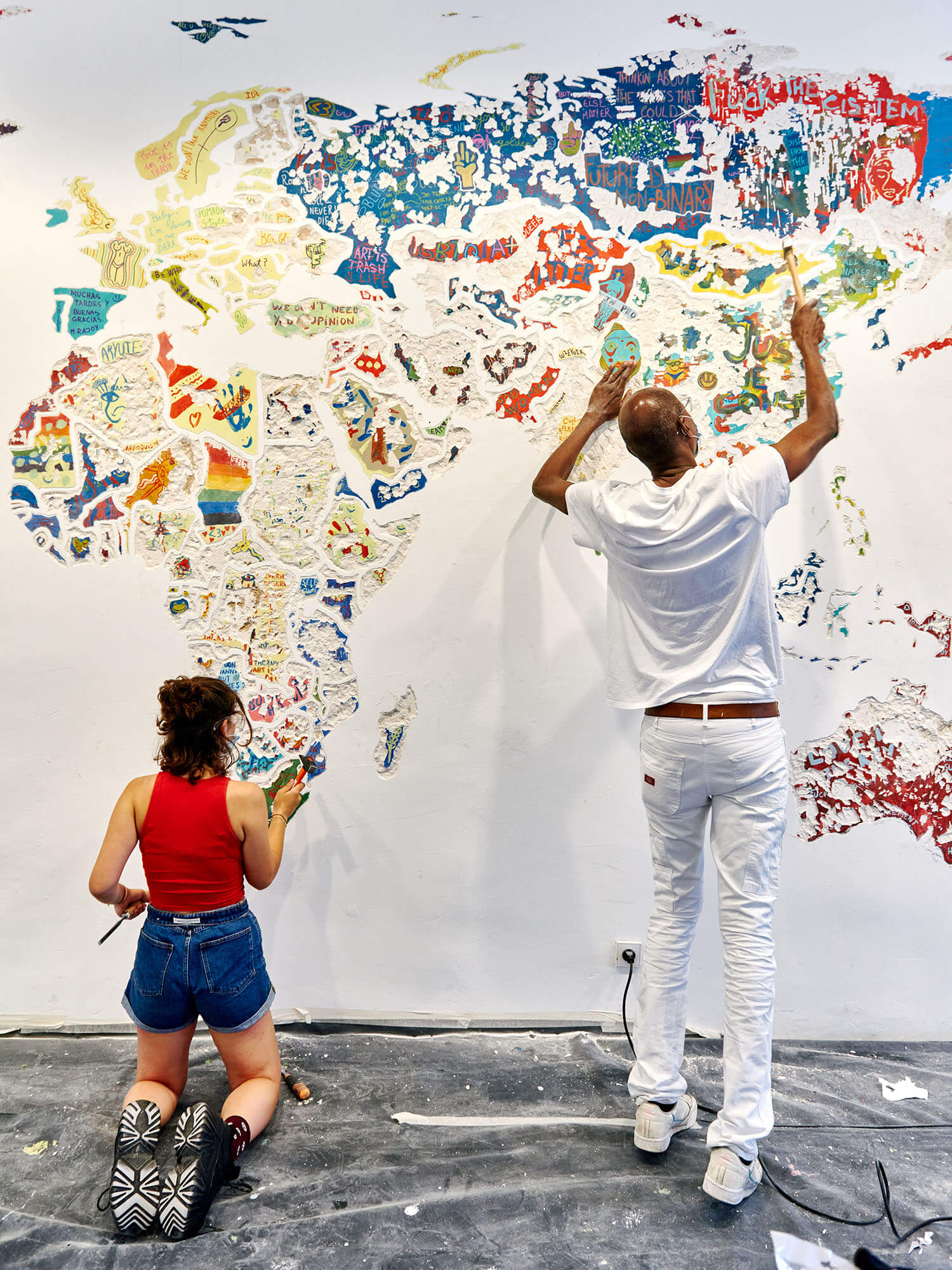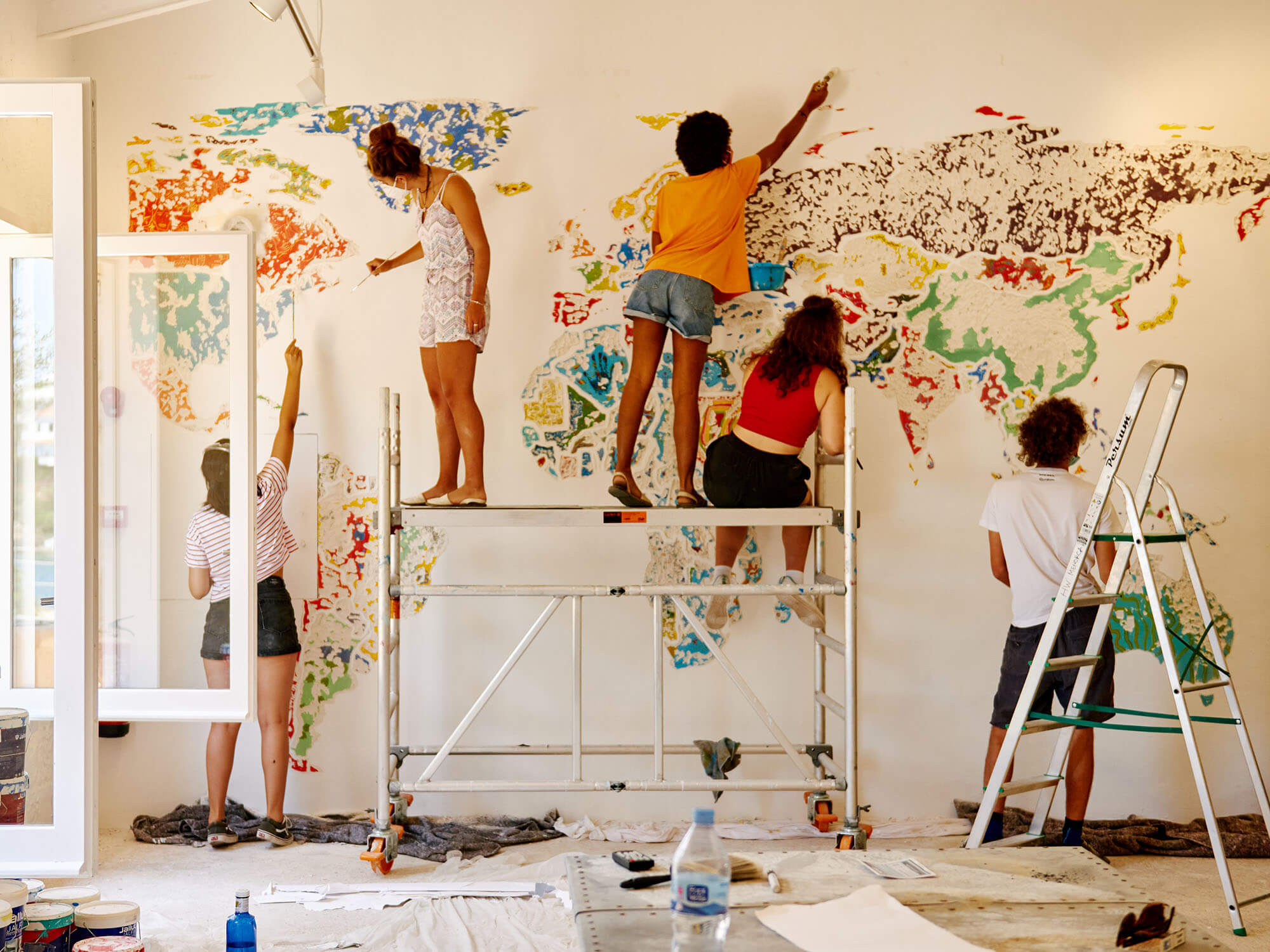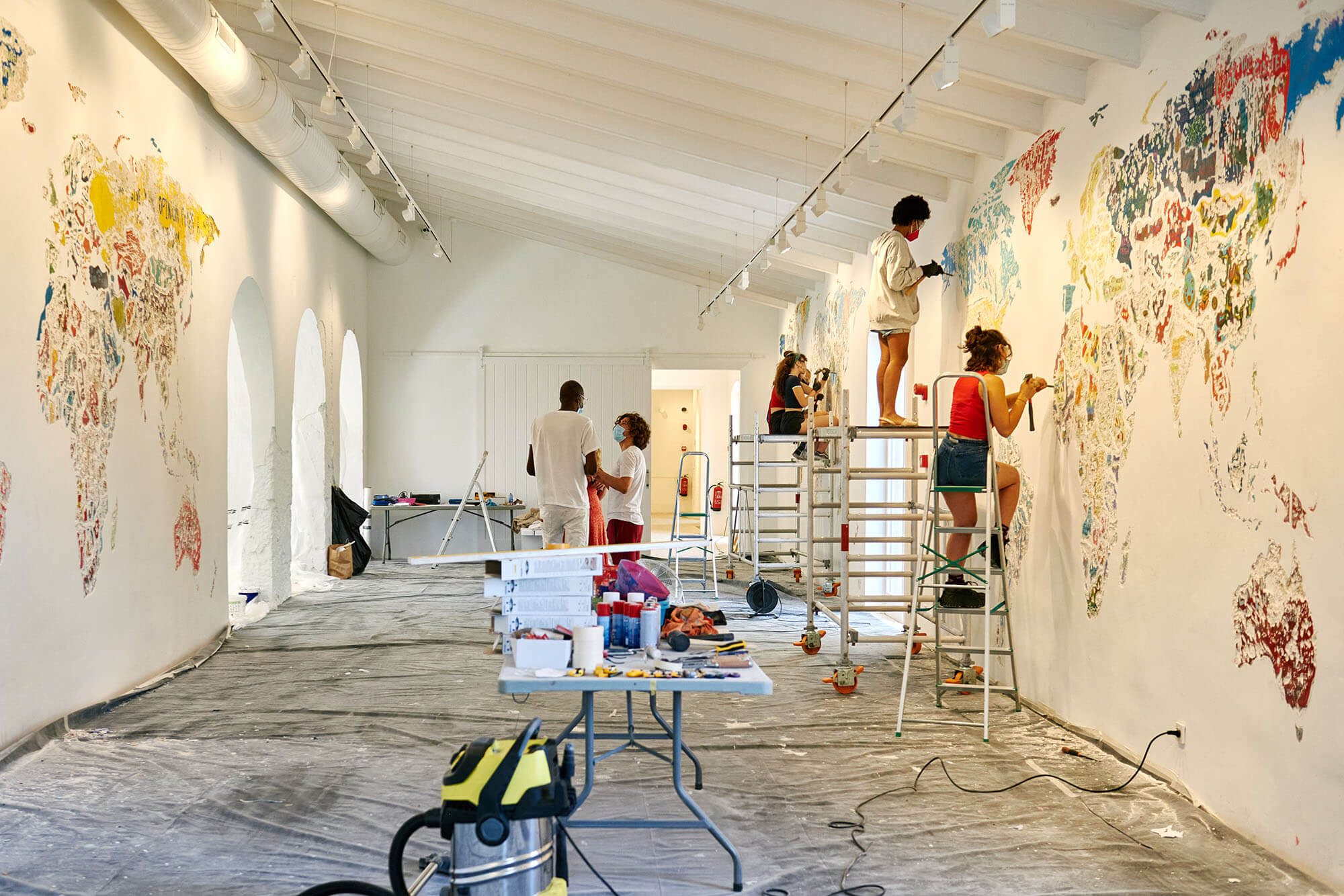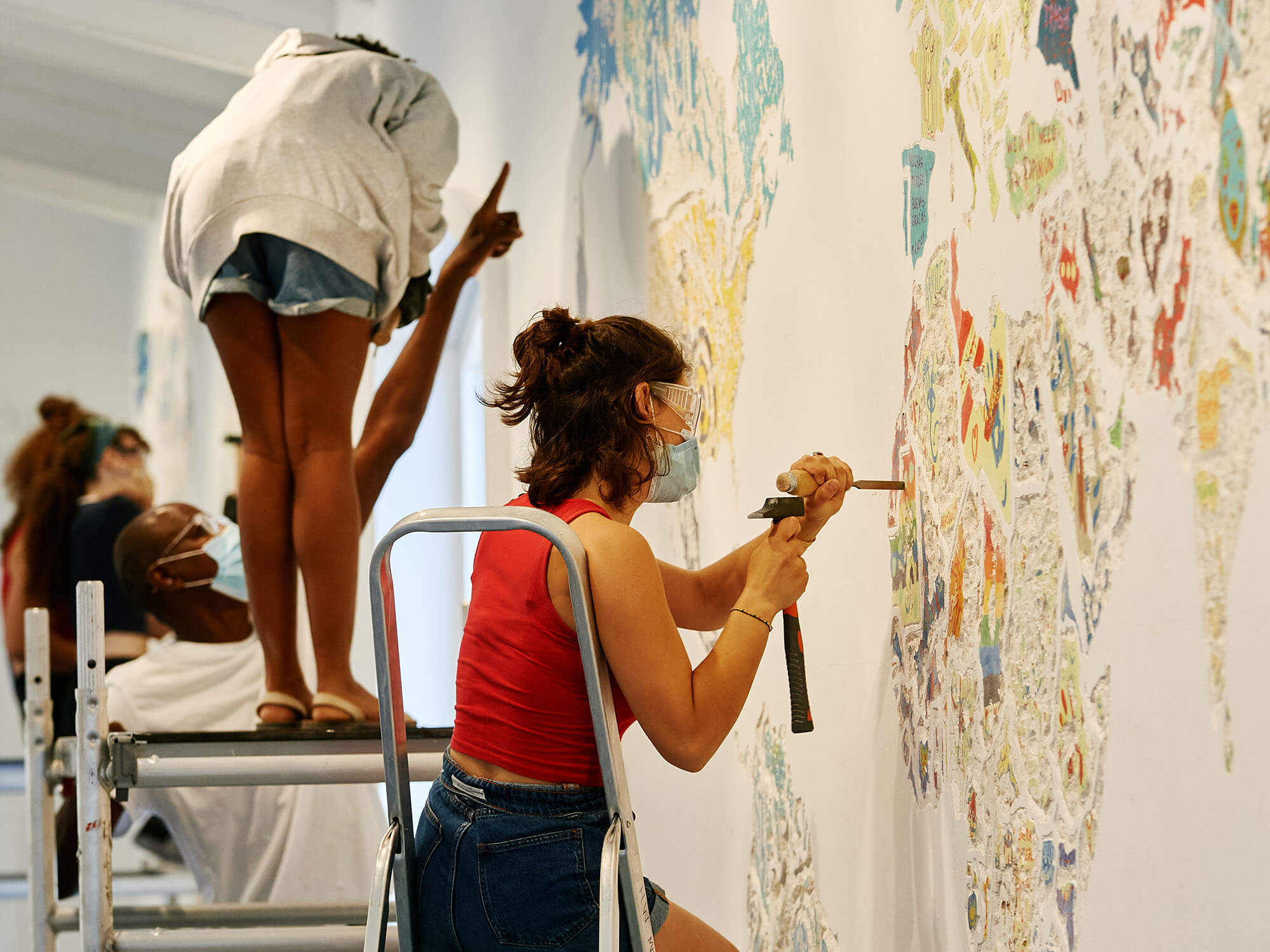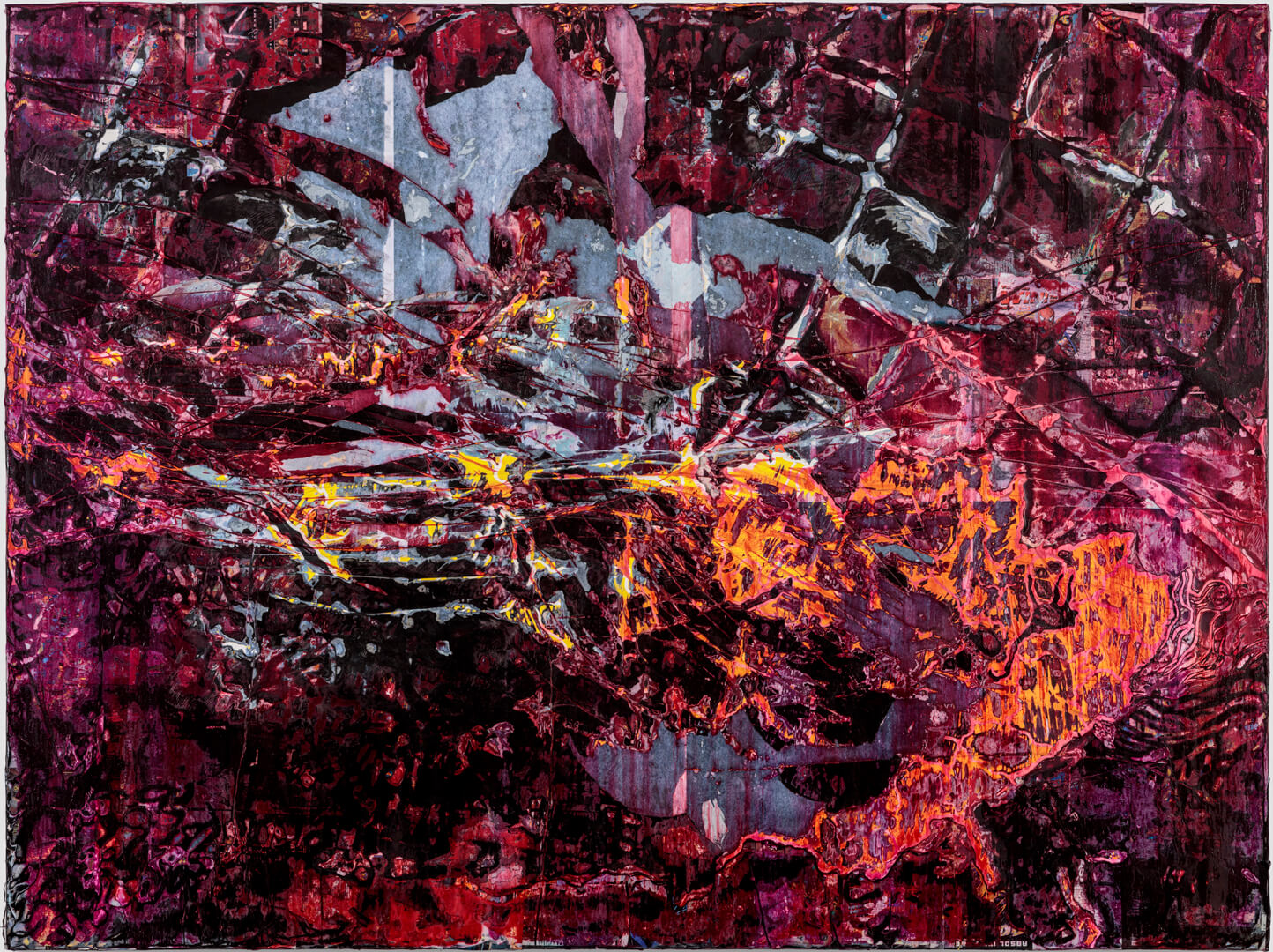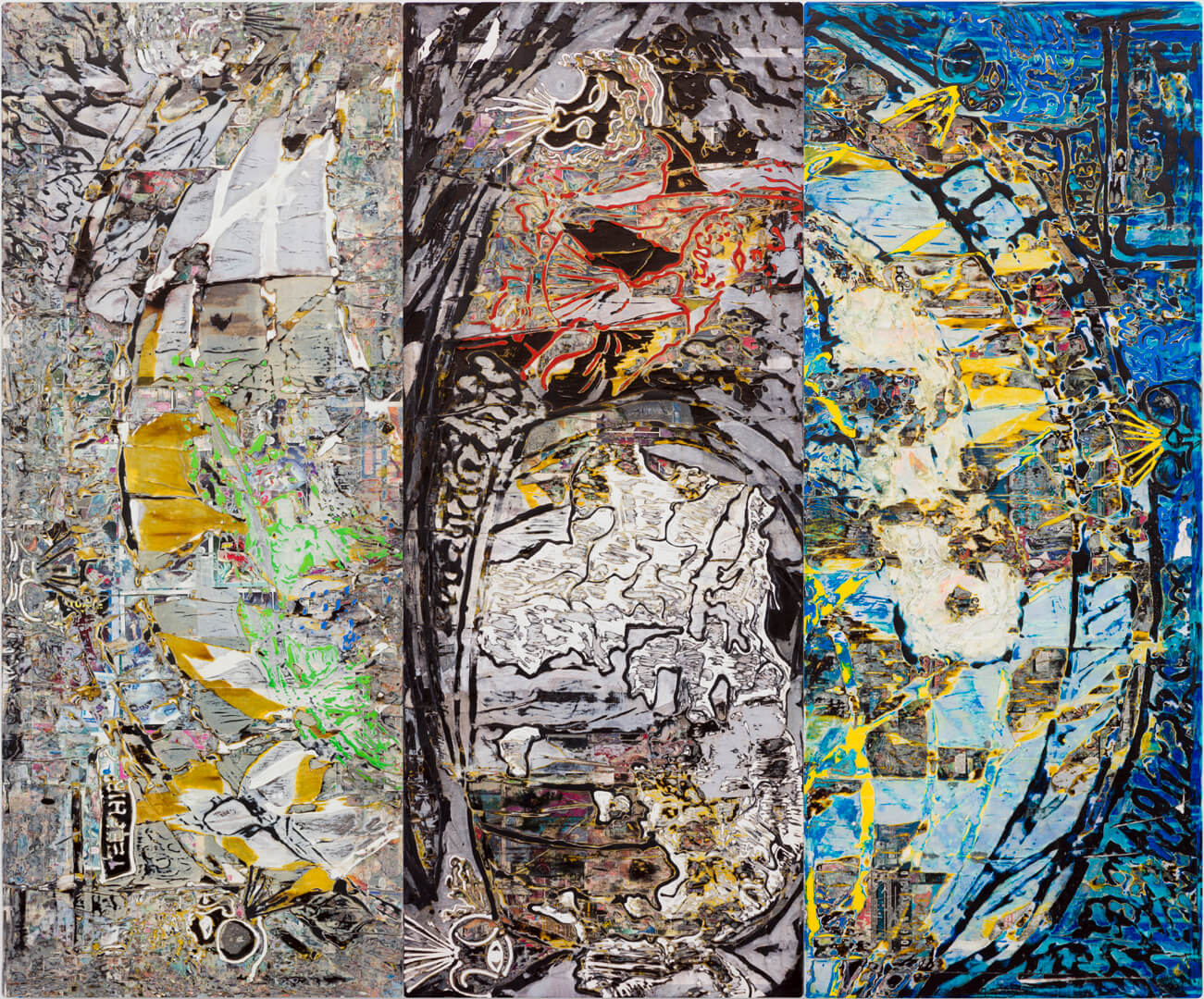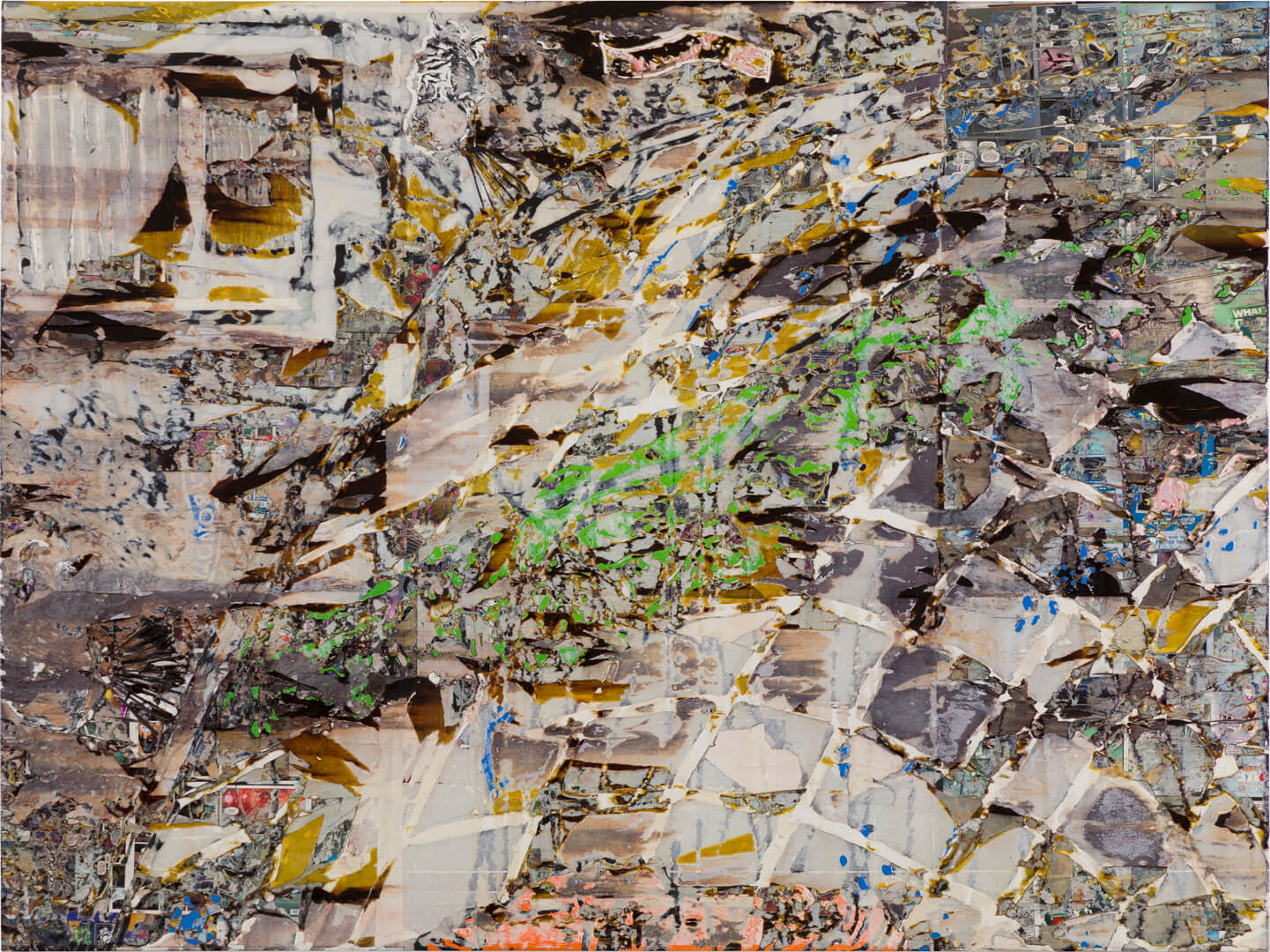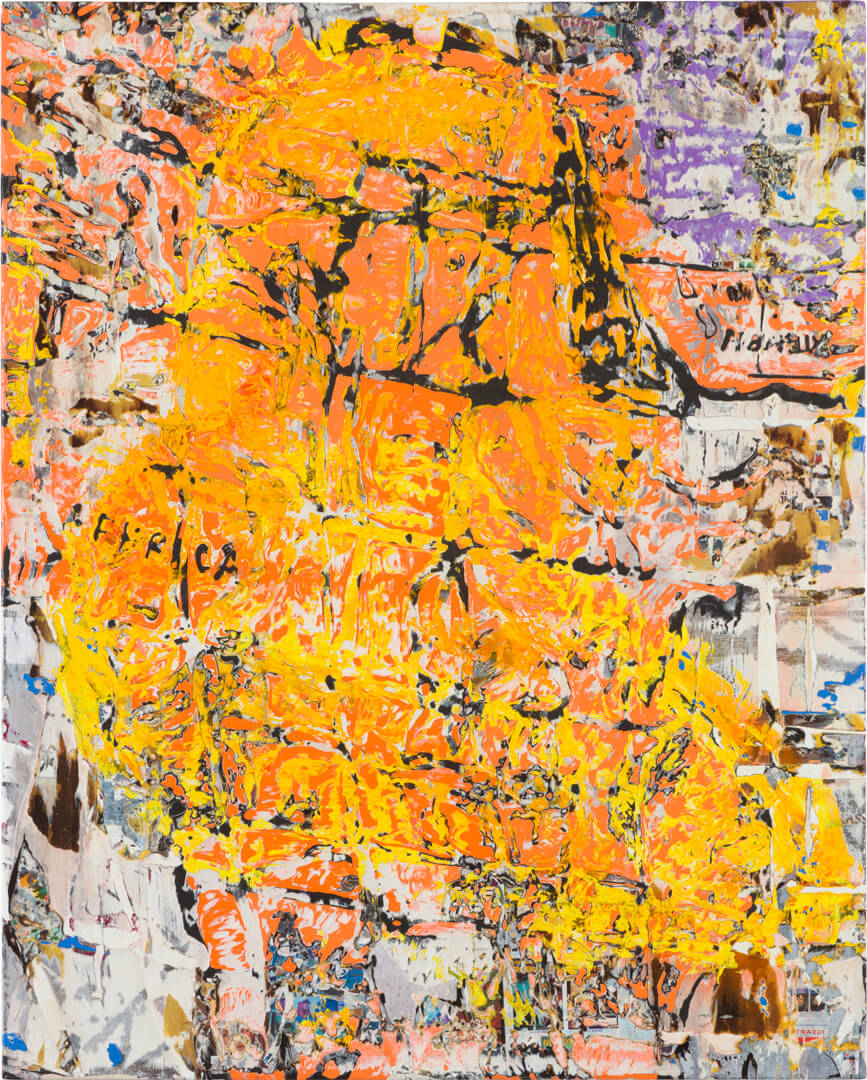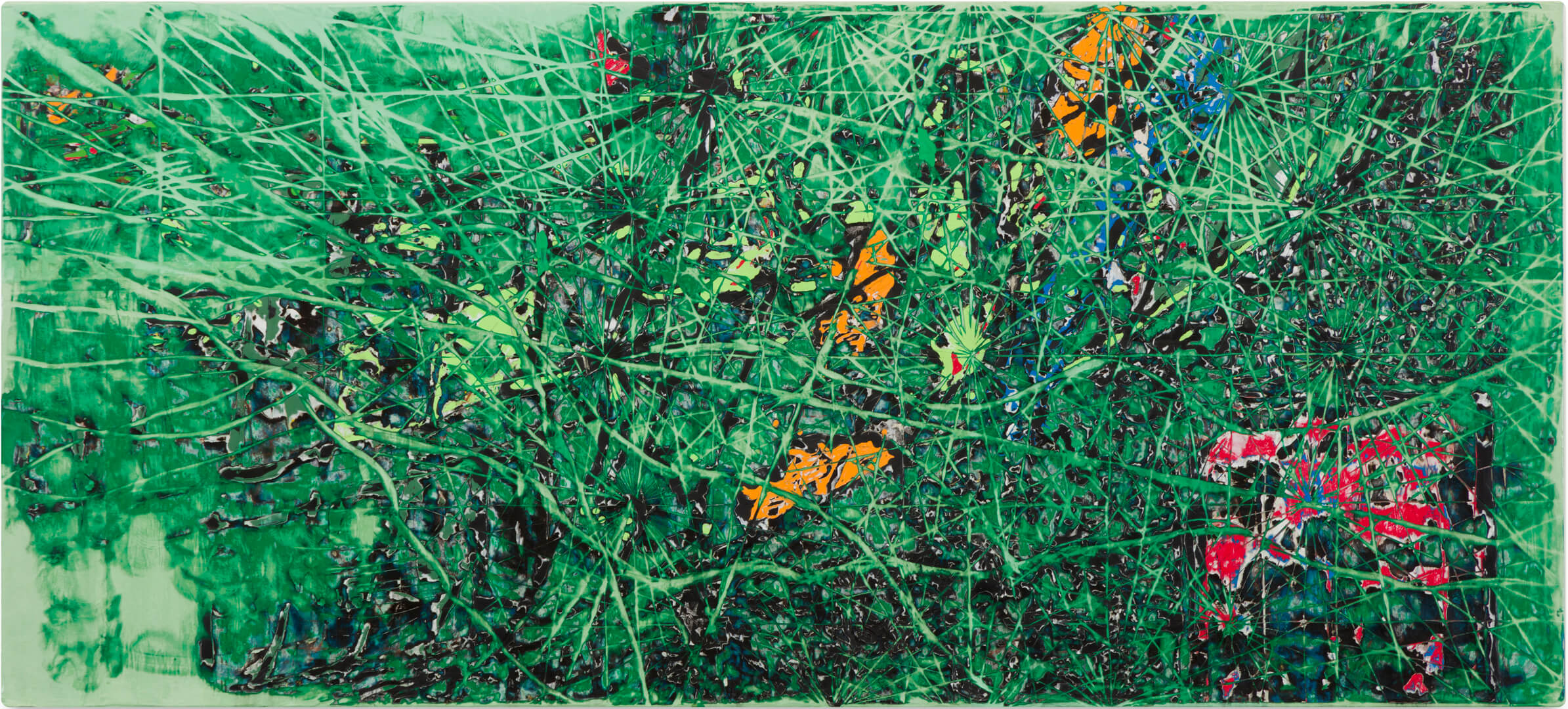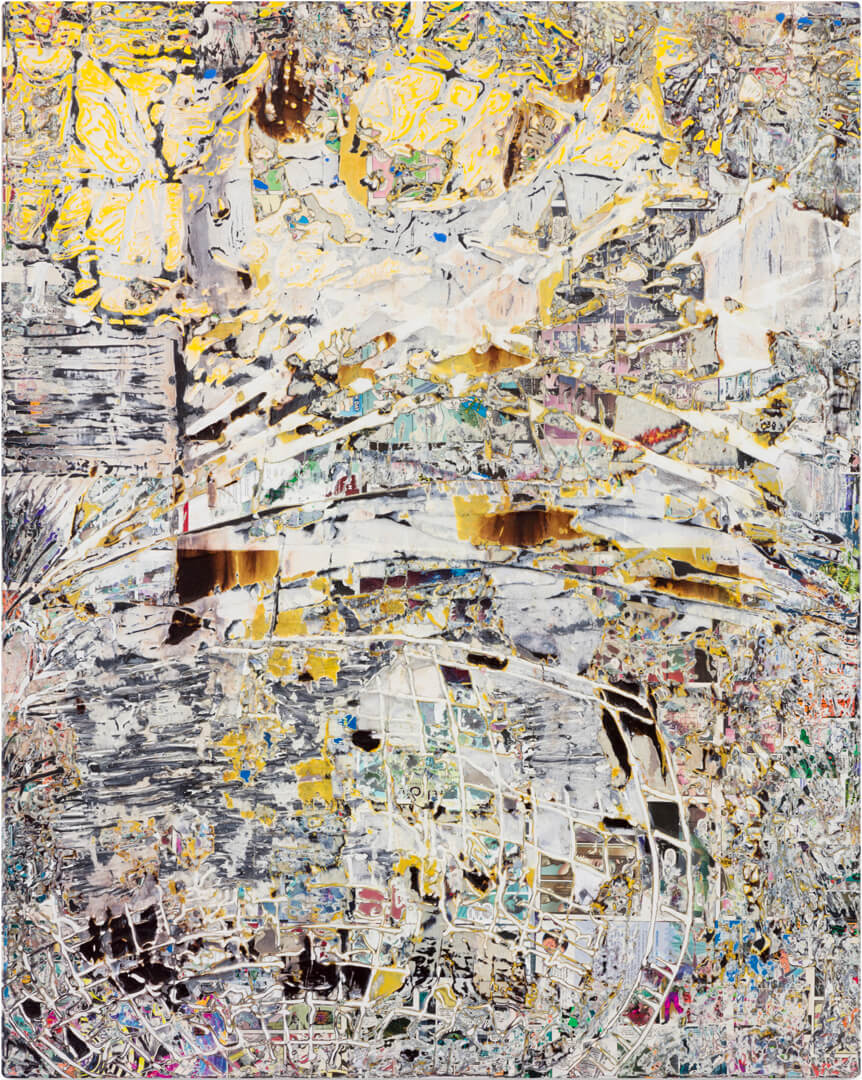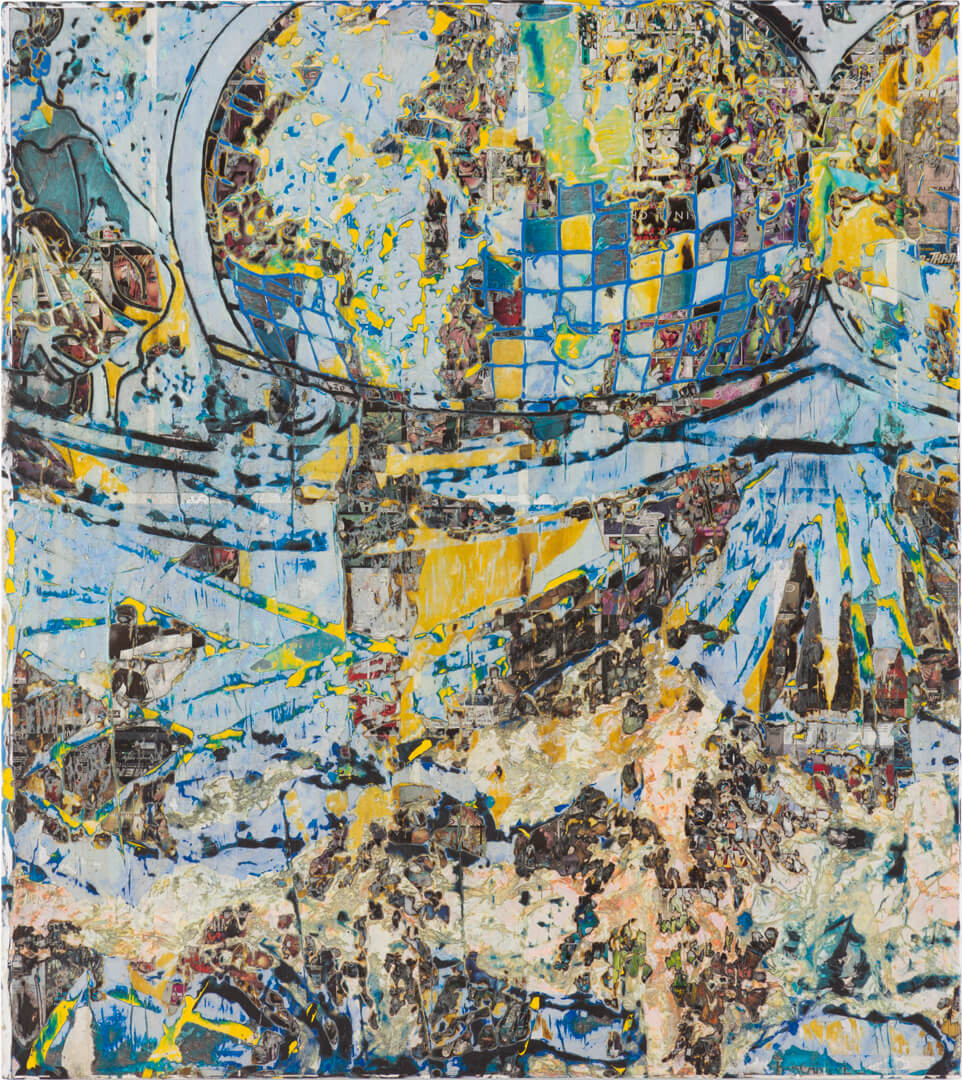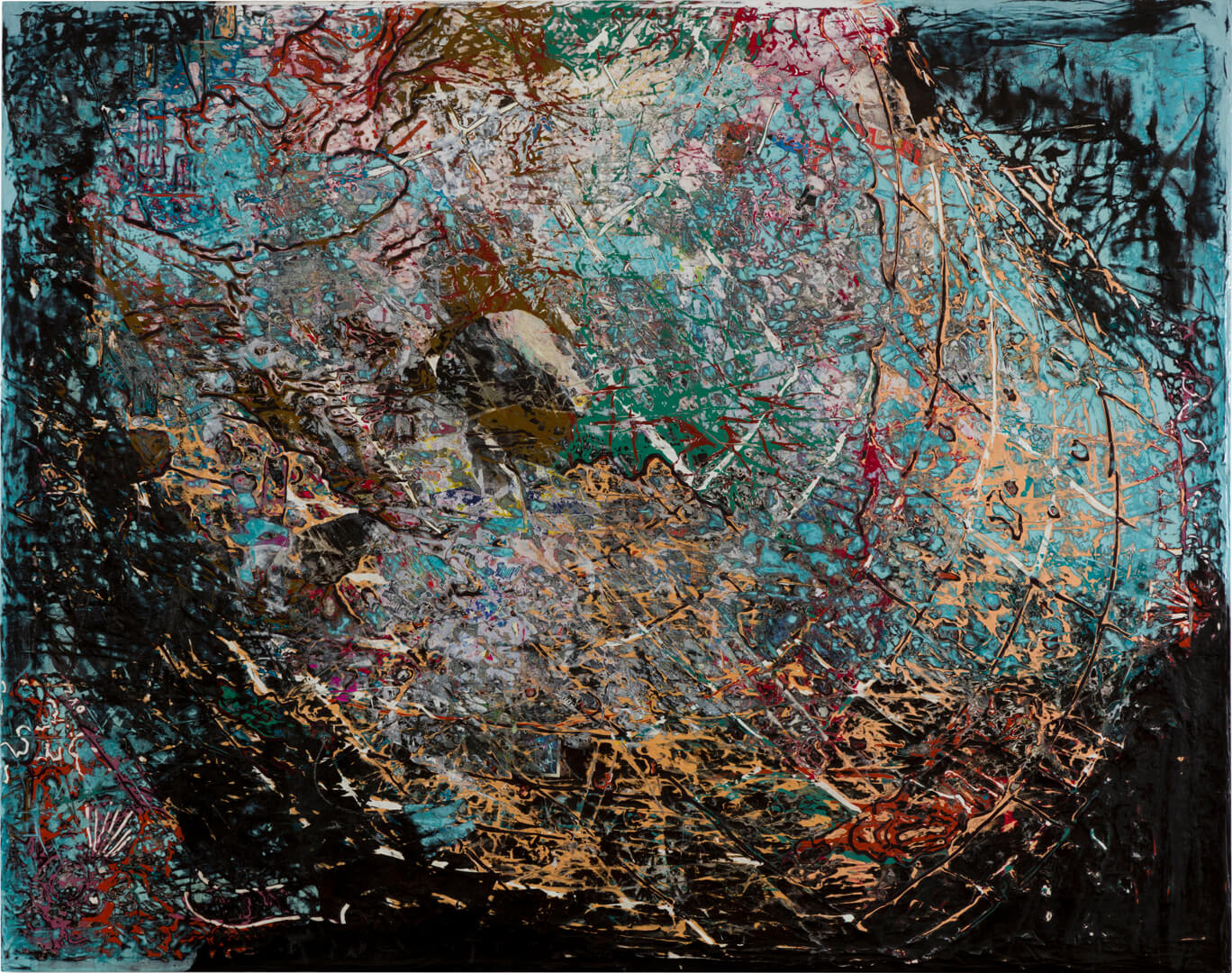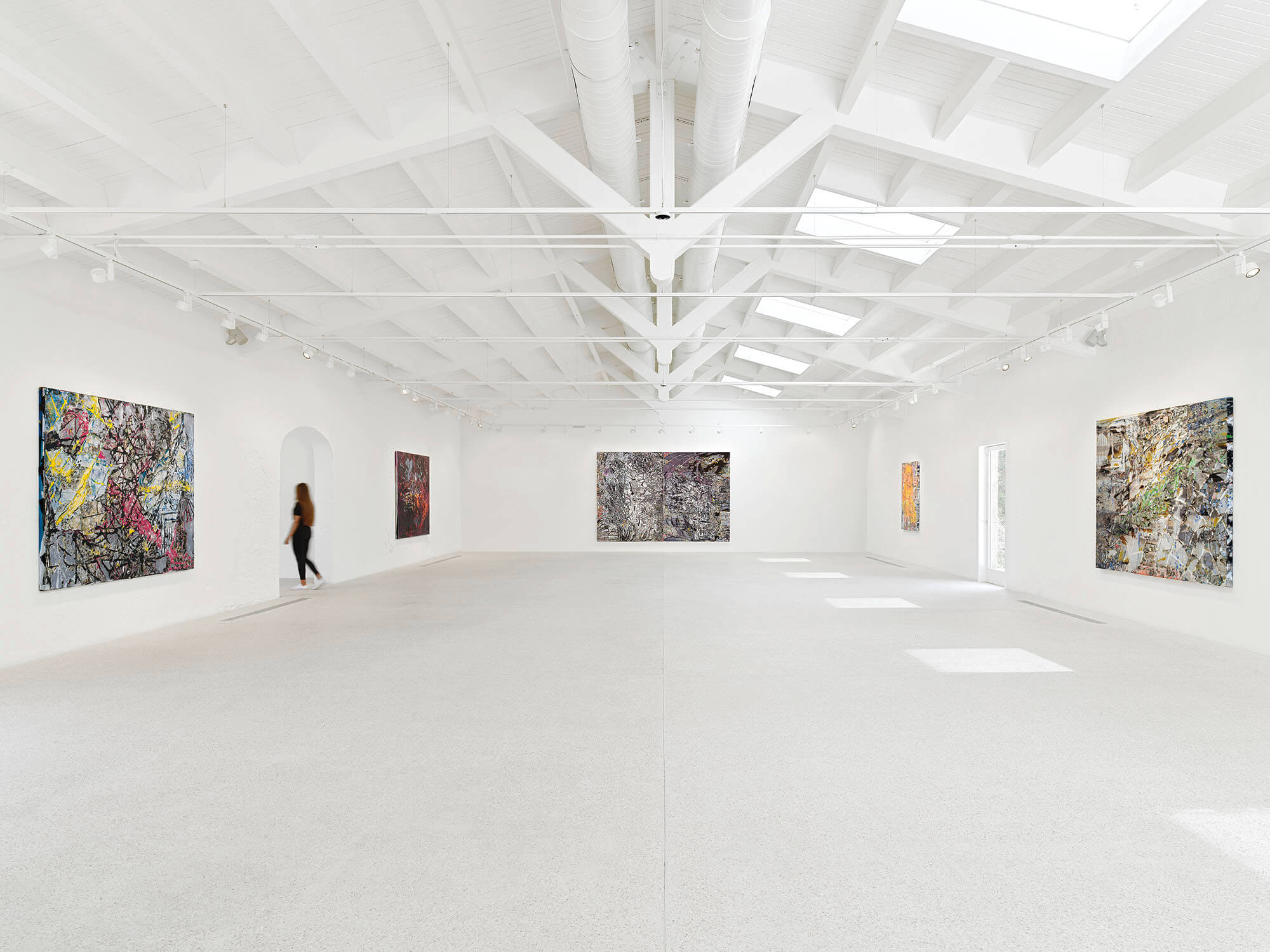
Mark Bradford
Masses and Movements
19 July – 31 October 2021
Continuing his career-long exploration of the systems that oppress marginalized populations, Bradford’s newest exhibition features work rich in both formal and allegorical complexity, reasserting the importance of abstraction to understand the world we live in and confirming his place among the most important artists working today.
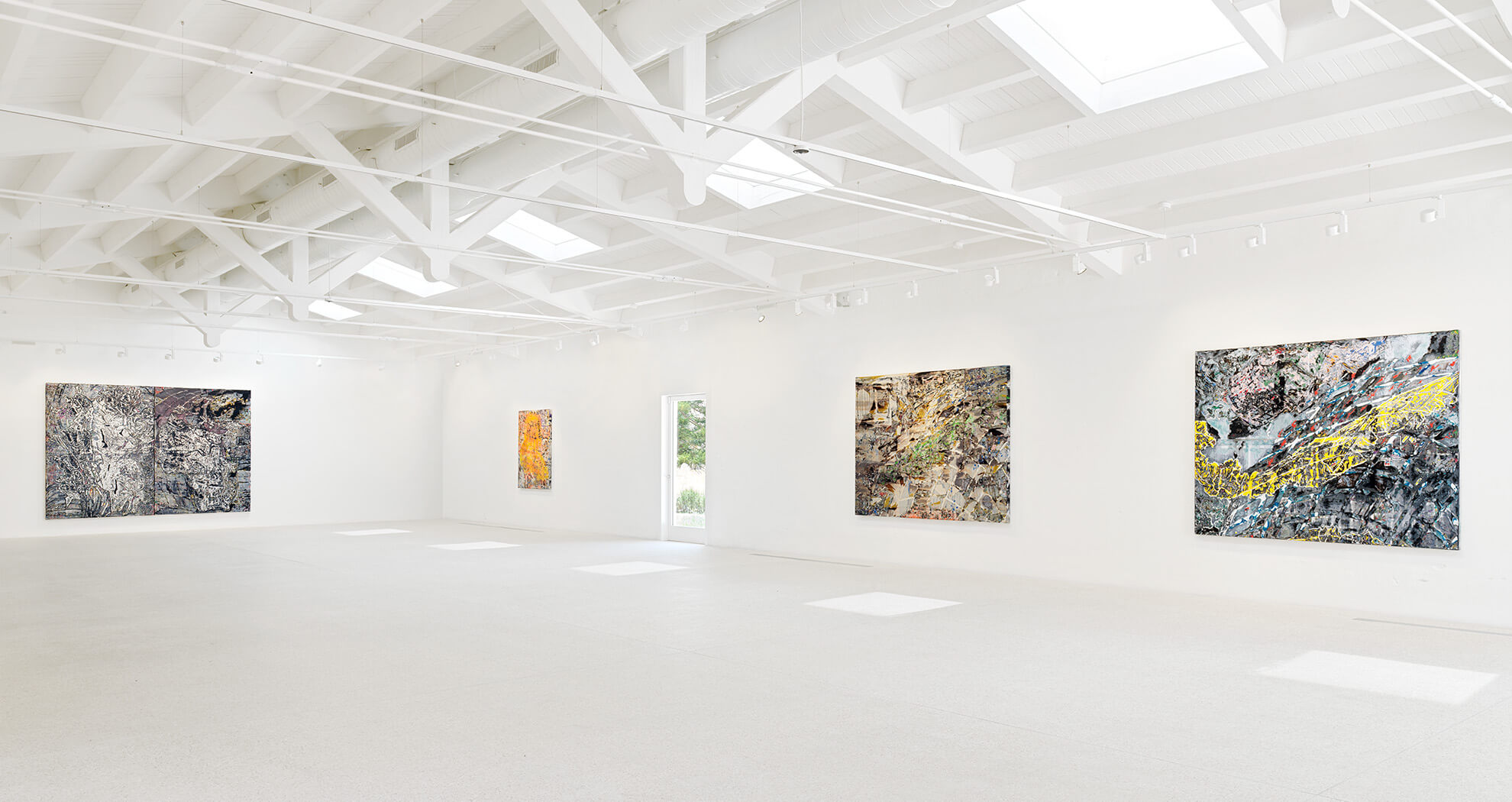
Explore the exhibition
For his first exhibition in Spain, Mark Bradford presents an installation of globe sculptures, a site-specific wall painting, and a suite of new canvases based on a sixteenth-century map of the world thought to feature the first use of the name ‘America’ in print.
In direct response to Mark Bradford's ‘Masses and Movements’, the Education Lab is dedicated to showcasing PILAglobal and features an artistic intervention emphasizing the vast, interconnected nature of the refugee crisis today. Site-specific wall drawings created in collaboration with students from the local Escola d'Art de Menorca spotlight popular migration routes around the globe.
Throughout his career, Bradford has employed his signature style of archaeological abstraction to explore maps of the world of all different kinds, unpacking social and political systems that objectify and marginalize vulnerable populations. Using maps of cities, neighborhoods, public housing developments, and trade routes, the artist has unpacked the embedded biases that define the barriers and boundaries we inhabit, revealing a world predetermined by power structures. For ‘Masses and Movements’, Bradford inverts this, instead reaching for a source image many times removed from a realistic representation of the world.
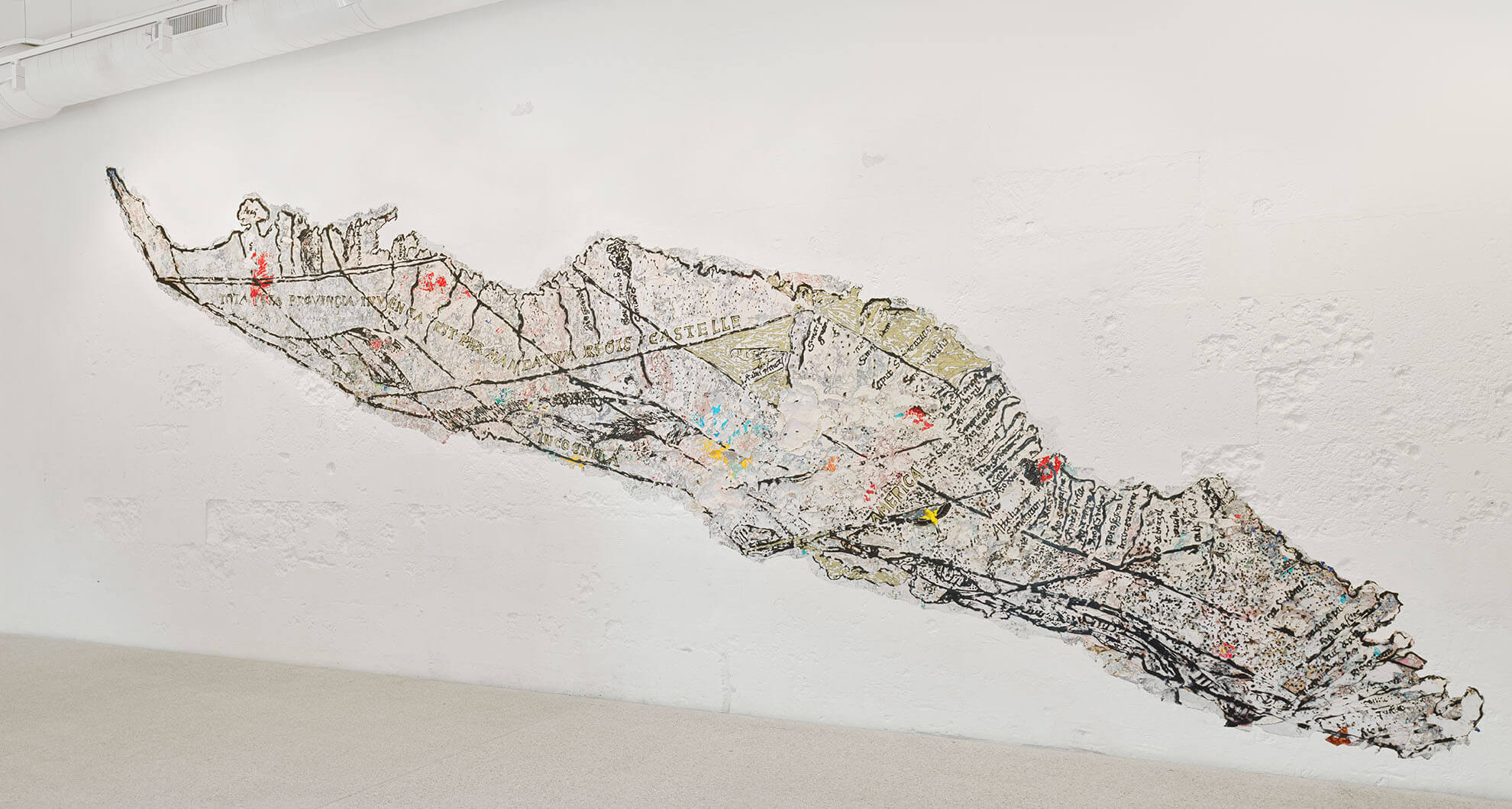
Using maps of cities, neighborhoods, public housing developments, and trade routes, the artist has unpacked the embedded biases that define the barriers and boundaries we inhabit, revealing a world predetermined by power structures. For ‘Masses and Movements’, Bradford inverts this, instead reaching for a source image many times removed from a realistic representation of the world.
‘Maps have always been shady. So much of what we understand about landmasses comes from cartographers and their relationships to power, and the need to always keep a place for Europe at the center of history. I’m interested in the potential for abstraction to pull the stories from the margins onto the pages of that history.’—Mark Bradford
In the original Waldseemüller map from 1507, Europe, the Mediterranean Sea, the northern coast of Africa, and the Middle East are well-defined and recognizable to the modern eye. Approaching the edges, angular shapes represent masses of land without definition, unexplored regions yet to be drawn and divided by European colonial powers. Latin texts, illustrations of human figures, and angelic personifications of trade winds fill the margins lending fantastical overtones to the depiction of the world. Across the Atlantic Ocean, ‘America’ is printed over what would later become known as Brazil.
Beginning with fragments of this map, Bradford applied caulk in expressive gestures that drip and run across the surface. Various types of paper add layers of color, and bleach transforms the materials into a nuance of shades and textures.
The artist then processed the surfaces using his signature techniques of sanding, scraping, tearing, and gouging through the accumulated layers of materials, excavating fossilized mythologies that feel familiar yet unrecognizable. Markings reminiscent of scrimshawed bones, vast interconnected lines, and half-recognizable shapes and figures repeat across the canvases in various placements and orientations.
The visual language evokes multiple narratives that conjure images of a world in motion: continental drift, animal migrations, the trans-Atlantic slave trade, or the displacement of indigenous peoples. Below the layers of accumulated material, Bradford uncovers unstable narratives of European exploration rooted in myth. Neglected on the surface of this map are the stories of those adversely impacted by the legacy of these colonial histories.
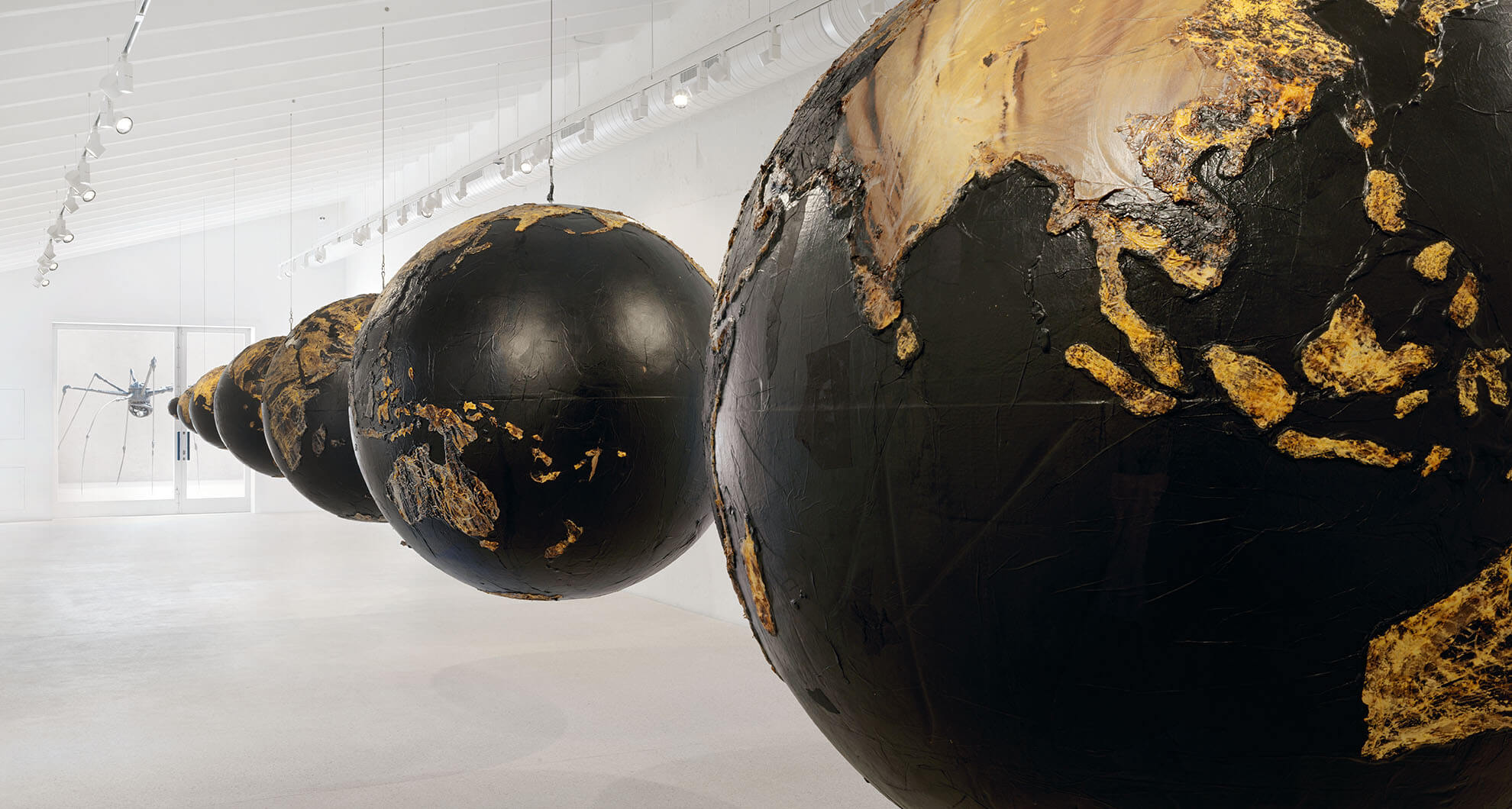
Suspended from the ceiling in a straight line in the centre of an adjacent gallery, seven globe sculptures of increasing sizes occupy the space, pushing visitors to the periphery. Black paper oceans surround crumpled masses of oxidized paper in the shapes of continents, harkening back to ancient fears of the sea as an unknowable and untameable ‘other’. Differing in sizes, the globes represent divergent experiences of a planet prearranged by inequitable access to power and privilege.

The final room in ‘Masses and Movements’ is dedicated to a display of art’s kinetic potential to center marginalized stories. Stacks of posters that visitors are invited to take feature advertisements for low interest home loans, foreclosure abeyance services, or cash for homes that Bradford collected around Los Angeles superimposed over images of deserts, oceans, border walls, and coastlines.
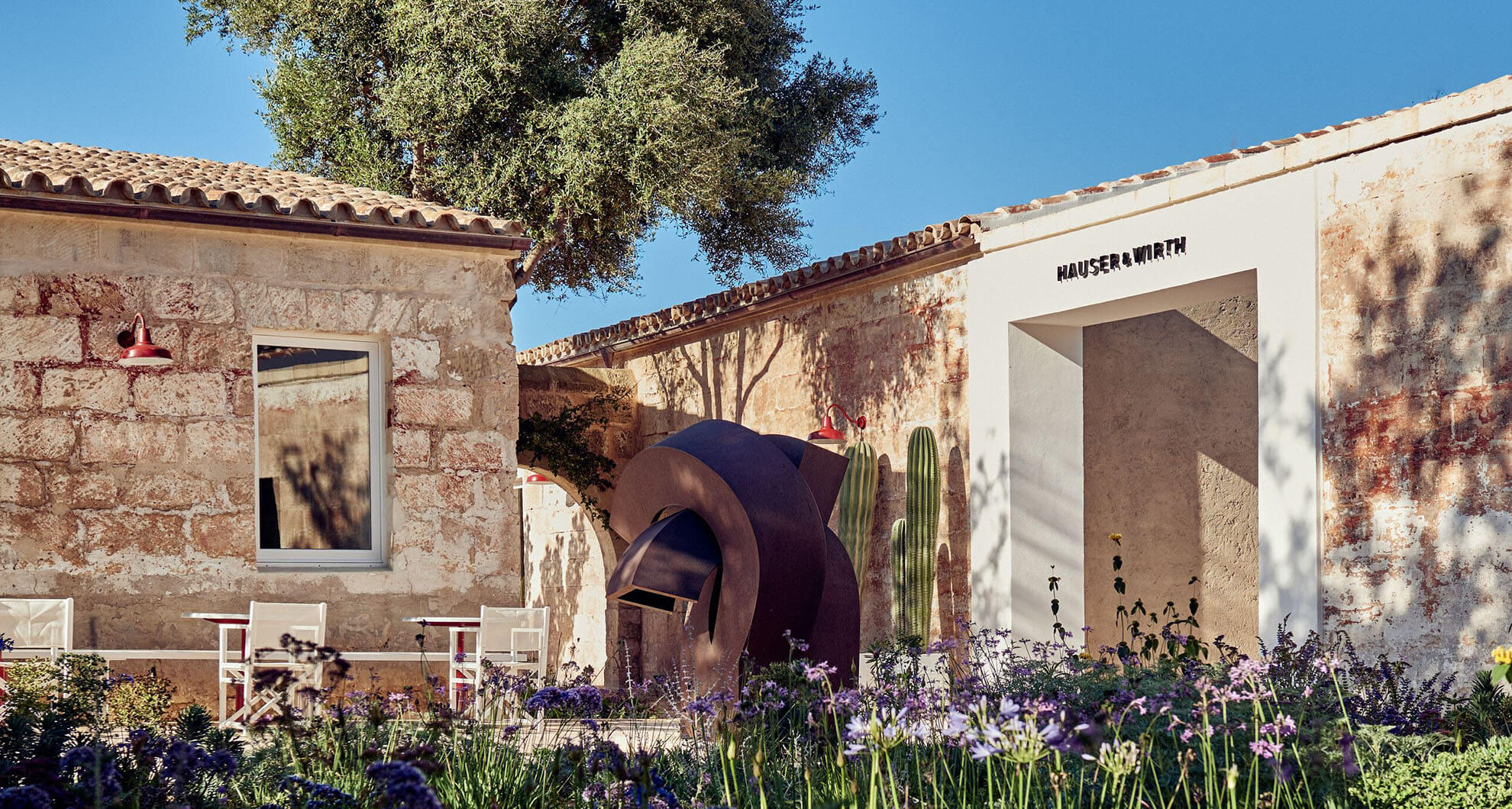
On view in Menorca
‘Mark Bradford. Masses and Movements is open at Hauser & Wirth Menorca 19 Jul – 31 Oct 2021. To plan your visit please visit our location page.
About the Artist
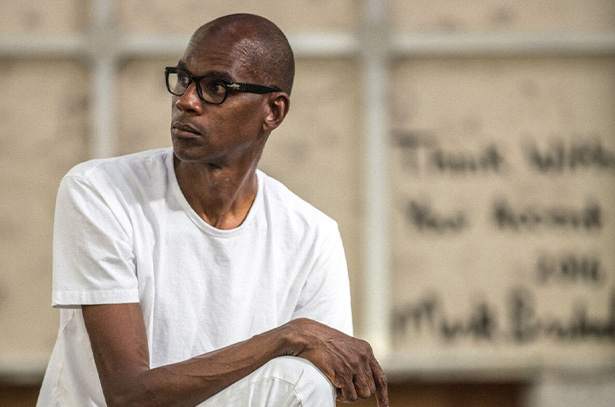
Mark Bradford
Mark Bradford (b. 1961 in Los Angeles; lives and works in Los Angeles) is a contemporary artist best known for his large-scale abstract paintings created out of paper. Characterized by its layered formal, material, and conceptual complexity, Bradford’s work explores social and political structures that objectify marginalized communities and the bodies of vulnerable populations. Just as essential to Bradford’s work is a social engagement practice through which he reframes objectifying societal structures by bringing contemporary art and ideas into communities with limited access to museums and cultural institutions.
Using everyday materials and tools from the aisles of the hardware store, Bradford has created a unique artistic language. Referred to frequently as ‘social abstraction,’ Bradford’s work is rooted in his understanding that all materials and techniques are embedded with meaning that precedes their artistic utility. His signature style developed out of his early experimentation with end papers, the small, translucent tissue papers used in hairdressing; he has since experimented with other types of paper, including maps, billboards, movie posters, comic books, and ‘merchant posters’ that advertise predatory services in economically distressed neighborhoods.
After gluing an image pre-selected for its historical significance onto canvas, Bradford outlines it with rope or caulk before affixing numerous layers of different types of paper. The artist then lacerates, erodes, and excavates the surfaces of his paintings using ‘tools of civilization’ to reveal intersections between the layers of signifying materials, thereby transforming and expanding the medium of painting.
Born in South Los Angeles, Bradford moved to LA’s beachside Santa Monica neighborhood with his mother at age 11. Throughout his childhood he worked in his mother’s beauty salon in Leimert Park where he first developed a curiosity in artistic and creative expression, and after high school, Bradford spent his summers traveling in Europe. His experiences visiting museums and consuming art left an enduring impression, and for the first time, at the age of 31, he began his formal arts education.
Bradford received his BFA from the California Institute of the Arts (CalArts) in Valencia in 1995 and his MFA from CalArts in 1997. Bradford received his first solo exhibition, ‘Floss,’ at the San Francisco Art Institute’s Walter & McBean Galleries in 1998 and his New York museum debut in ‘Freestyle’ at the Studio Museum in Harlem in 2001. In 2006, Bradford participated in the Whitney Biennial at the Whitney Museum of American Art where he won the coveted Bucksbaum Award, leading to his first major solo museum exhibition the following year at the Whitney, ‘Neither New nor Correct.’ In 2008, in the wake of Hurricane Katrina, Bradford participated in Prospect.1 in New Orleans, and in 2010, the Wexner Center for the Arts presented a retrospective of his work that traveled for two years to five institutions around the US.
In 2015, Bradford received his first solo museum exhibition in Los Angeles, ‘Scorched Earth’ at the Hammer Museum, and that same year co-founded Art + Practice in Leimert Park with his longtime partner, Allan DiCastro, and philanthropist and art collector Eileen Harris Norton.
In 2017, Bradford represented the United States at the 57th Venice Biennale with his solo exhibition ‘Tomorrow is Another Day.’ Complementing the presentation at the US Pavilion and in keeping with his practice to engage marginalized communities, Bradford launched Process Collettivo, a six-year partnership with the Rio Terà dei Pensieri social cooperative that provides skills training and employment opportunities to incarcerated men and women in and around Venice. Following the Biennale, ‘Tomorrow is Another Day’ traveled to the Baltimore Museum of Art, where Bradford collaborated with Greenmount West Community Center (GWCC), a community art space offering educational resources to families in Baltimore.
In November 2017, Bradford unveiled ‘Pickett’s Charge’ at the Hirshhorn Museum and Sculpture Garden in Washington, DC, and in 2018, installed a 32-canvas painting of the text of the US Constitution titled ‘We The People’ for permanent display at the US Embassy in London. In 2019, Bradford produced ‘Life Size,’ a large image of a police body camera on a vinyl banner at the entrance to the backlot at the inaugural Frieze LA fair and on wheatpaste posters throughout Los Angeles. Bradford also created a limited-edition print series with the same image to raise money for the Art for Justice Fund to support career development opportunities for people transitioning out of prison.
Bradford has exhibited to acclaim internationally and received numerous awards and honors, including his appointment to the American Academy of Arts and Sciences in 2019, the US Department of State’s Medal of Arts in 2014, his appointment as a National Academician in 2013, and a MacArthur Fellowship Award in 2009. Permanent installations of Bradford’s work include ‘What Hath God Wrought’ (2018) on the campus of the University of California, San Diego, and ‘Bell Tower’ (2015) at the Tom Bradley International Terminal Departures Hall at Los Angeles International Airport.
Recent solo exhibitions of Bradford’s work include ‘Masses and Movements’ at Hauser & Wirth Menorca (2021), ‘End Papers’ (2020) at the Modern Art Museum of Fort Worth; ‘Cerberus’ (2019) at Hauser & Wirth London; and ‘Los Angeles’ (2019) at the Long Museum West Bund, Shanghai.
Inquire to learn about available works by Mark Bradford
Mark Bradford. Masses and Movements.
This inaugural exhibition at Hauser & Wirth Menorca is on view 19 July – 31 October
Current Exhibitions
1 / 10
